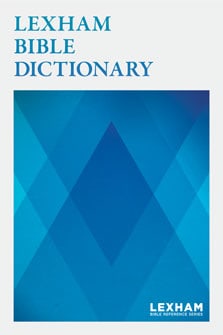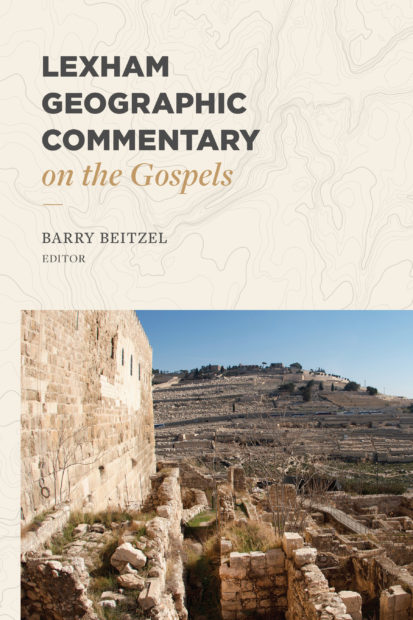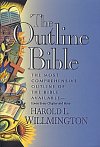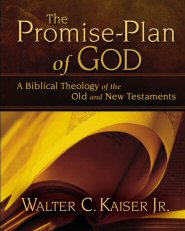Writing a paper on the theology of a biblical book is one of the best ways to internalize that book’s message. Not only will it require familiarizing yourself with the entire book, but you’ll also synthesize how the parts relate to the whole as you seek to explain the book’s theology and message.
There are six main steps to researching and writing a paper on the theology of a biblical book:
- Study the book’s background
- Outline the book
- Identify and study key verses
- Examine its relation to the rest of the Bible
- Research outside commentary
- Report on your findings
Study the book’s background
Before beginning to study any book of the Bible, it’s critical that you understand the proper context of the book—it’s genre, when it was written and by whom, and more. Doing so provides us some knowledge of the culture and history the book was written in—and helps ensure correct biblical interpretation. As biblical scholar Craig Keener says, “Context is the way God gave us the Bible.”
Click each topic below to learn more about each.
Genre
Is it a letter? Narrative? Poetry? Each genre has its own rules for interpretation—for example, poetry is not to be taken literally, but the narrative is. Knowing a book’s genre helps you to properly approach it.
Author
Who writes a letter or book reveals a lot about the book. Not only does that person’s history inform their words but so does their relationship with the people they are writing to. For example, the fact that Paul mentored Timothy in the faith gives his letters to Timothy a certain tenderness and intimacy.
Audience
Likewise, the audience of a book helps us understand it. For example, we learn through biblical archaeology and internal clues from 1 and 2 Corinthians that sexual immorality ran rampant in Corinth and among its Christians. With that background, we can understand more of what Paul says in those letters.
Date
Knowing the date (or approximate date) a book of the Bible was written helps to place it in its correct historical context. For example, the Israelites were exiled from Israel to Babylon in 586 BC. Books of the Bible written shortly before or after this exile illuminate the events and activities that relate to Israel’s exile in a much more profound way.
Location
Similar to date and audience, location completes part of the puzzle of context. It can also help us better appreciate certain details. For example, the Psalms mention the desert often because many of David’s trials happened there. Being able to picture the actual deserts in and around Jerusalem takes us further into the text.
Purpose
Lastly, most books in the Bible are written for a specific purpose. For example, Luke was written that Theophilus might have more confidence concerning reports he was hearing about Jesus (Luke 1:3–4). When authors don’t state the book’s purpose, we can use the above contextual clues to infer it.
Helpful resources
Basically, every commentary will cover all of these items and more in their introductions, sometimes in great detail. You can also find this sort of information in study Bibles, dictionaries, and monographs (single books) about Bible backgrounds.
Here are just a few to get you started.

Lexham Bible Dictionary (free)
You can find a fairly thorough overview of every book of the Bible in this dictionary, including the above elements of background.

Lexham Geographic Commentary on the Gospels
Written by a team of scholars with on-the-ground experience in Israel, the Lexham Geographic Commentary lets you see the land through the eyes of the disciples as Jesus uses the surrounding landscape as the backdrop for his teaching. Each article addresses a particular story, event, or subject across the Gospels. (Acts–Revelation forthcoming.)
Outline the book
Structure is a vehicle for meaning. Outlining a book is an exercise in identifying structure, which reveals a book’s flow of thought.
Generally, the following are clues for identifying structure. It’s best if you do this work yourself before consulting commentaries to see how others have outlined books.
- Conjunctions — Particularly in epistles, words like “now,” “so,” “but,” and “therefore” reveal shifts in thought, either subtle or dramatic. For example, Romans 12:1 begins with “Therefore,” and from there Paul gets more “practical,” which leads most scholars to agree that chapter 12 marks a major shift in the letter.
- Mood — We’re not talking about emotional moods (although that could be), but verb moods. A shift from indicative (“God is…”) to imperative (“We must…”) indicates a new section, as just described in Romans 12.
- Characters — Especially in narrative, you can trace structure along with the focus on characters. For example, you could divide Genesis by the different patriarchs it follows, from Abraham to Isaac to Jacob, and so forth. Or in Acts, the focus shifts from Peter to Paul in chapter 13.
- Topic or theme — Often, a book’s movement between subjects is its primary structure. For example, the book of James moves between topics like faith, wisdom, and the tongue. Focus on repeated words to spot important themes and topics.
- Audience — Particularly helpful in prophetic literature, you can trace a book’s structure by who is being addressed. For example, many divide Isaiah based on who is receiving judgment–Judah and Israel in chapters 1–39, and then other nations in 40 and beyond.
- Geography — Again, more of a structural clue for narrative, sometimes a book is structured by what’s happening where. For example, the Gospels record Jesus’ ministry as it moves from Galilee toward Jerusalem. Or the book of Acts, as the gospel message moves from Jerusalem outward.
Overview of Ecclesiastes
Here is an example of an outline of Ecclesiastes. The Bible Project has many such videos, which will help you learn (among many things) how to spot structure.
Tools for outlining the Bible
Bible Outline Browser
This tool brings together all of the Bible outlines across your Logos library and lets you intuitively search through them all. Explore popular ways of breaking up and interpreting the text, and quickly find the outline you think is best.
Explore the Bible Outline Browser
Commentaries
Commentaries are among the best tools to consult for determining outlines. Browse the best commentaries on every book of the Bible to find reputable insights.
Faithlife Study Bible
For a quick check, you can always consult study Bibles. The Faithlife Study Bible is a free digital study Bible that discusses, among other things, the structure of every book of the Bible.
The Outline Bible
In this work, each major outline level uses a literary device—such as alliteration, rhyme, etc.,—to help the point stick in your mind and heart, and the unique formatting for each level helps you easily recognize it on the page. At the head of each outline is a brief summary of the information covered under that outline. References have been provided at almost every level so that the reader can easily and instantly recognize all the verses covered under that point.
Identify and study key verses
After you finish outlining a book of the Bible, you probably have an intuitive sense of its key passage(s). A book’s key passages are those that most densely back in its theology or communicate its purpose. For example, Romans 1:16 is widely regarded as the key verse of Romans, since it contains so many themes unpacked in the book.
Here’s are a few things to pay attention to when trying to discern a key passage:
- Statement of purpose — When a book states plainly why it was written (e.g, Luke 1:3–4; John 20:31), you know these are key verses.
- The most important themes — As with the Romans example above, you can determine a key verse/verses by whether it mentions many of the themes treated in the rest of the book. In this sense, the passage is sort of the “nucleus” of the book. This is how most key passages are determined. (Note: “key passages” are in no way inspired or intended by the author of the book; they are simply helpful for linking the theme(s) of a book to a particular passage.)
- Unique themes to the Bible — Another way of identifying a key passage is if it mentions something that makes the book unique from other books of the Bible. For example, 1 John talks about love and truth and darkness and light more than most books, so a key passage might be 1 John 2:7–10.
Tools for discerning key passages
Commentaries
While this task is somewhat subjective, your best bet is to consult the introduction of a commentary on your book. Typically you’ll find information about key passages under headings like Theme, Message, or Theology.
Again, consult the most reputable commentaries for trustworthy insights.
The Bible Project
Again, the Bible Project’s overview videos are often helpful here. Many of them will note important passages that seem to package the book.
Examine a book’s relationship to the rest of the Bible
This is not a long step, but it is an important one. No book of the Bible is an island—the Bible holds together in a unique way, and every book is important.
So before you land on a theology of your book, ask: “What does this book uniquely contribute to the story and/or theology of the Bible?” For example, Genesis lays a foundation, introducing the covenants that run literally through the entire Bible (and are fulfilled in Jesus). Proverbs, on the other hand, has no narrative movement but is an extended reflection on the moral fabric of the Torah. And then the Epistles of the New Testament take you into the early church as believers learned how to live together in the new covenant.
Questions you might ask on your way to discovery are:
- Why is this book included here? How is it continuing the story?
- What other books of the Bible does this book relate to? For example, Lamentations corresponds to the exile of Judah (2 Kings 25; Jer 52).
- What book has theology like mine? For example, John and 1 John, written by the same apostle, have many similar themes. The same is true of 1 and 2 Thessalonians.
- What hole would exist in our theology or story without this book?
- For New Testament books, ask how it relates to the Old. Does it quote or allude to the Old, and in what ways? For Old Testament books, how does it foreshadow the New Testament? Draw lines between the testaments.
Again, commentaries and good study Bibles will tip you off to these connections, but you might also consult a resource about how parts of the Bible relate to each other.
Resources on the cohesion of Scripture
The Story of the Bible
This is the second in a short, helpful series by the Bible Project about the nature of the Bible.
Again, consult the most reputable commentaries for trustworthy insights.
Explore the rest of this Bible Project series.
The Bible Timeline
This is a longer video that covers similar material as the one above. It also has an accompanying blog post.
Read the post accompanying the video.
The Promise-Plan of God
In this book, Walter Kaiser Jr. works chronologically through the books of both testaments to demonstrate how God’s main promise is seen throughout, how the various sub-themes of each book relate to the promise, and how God’s plan to fulfill the promise progressively unfolds.
Learn more about all 66 books of the Bible.
Read more about the book
After you’ve outlined the book and searched it for key passages, you are ready to delve more deeply into it. You probably won’t have enough time to do an exegetical study of the entire book, so turn to resources that highlight what’s most important about your book.
These include:
- Dictionaries — Bible dictionaries are a great place to start, as the best of them know what is important to discuss about each book, especially areas of debate. You’ll also find helpful bibliographies in dictionaries, which will point you to other resources—like monographs.
- Commentaries — Like dictionaries, commentaries provide helpful (and sometimes in-depth) overviews of your book. A critical commentary is especially helpful here, as they are known to interact with the most scholarly material and present the greatest detailed analysis. You might start with a non-critical commentary first, and then move on to a critical one if you don’t find a substantive enough treatment.
- Monographs — “Monographs” is a fancy word for a single book, one that’s focused on a particular topic. For example, when preparing a paper on the book of Romans, you’ll probably come across the New Perspective on Paul. There are plenty of monographs (books) on this topic you may refer to for further reading, as time allows.
- Journal articles — Even more than monographs, journal articles focus on particular topics, often areas of debate. You can use Atla, a religious studies database, for deeper research on topics within your book.
Pay attention to what these resources say about the theology of the book as well as important debates concerning the book. These are the primary focuses of your paper. Essentially, you want to show your professor (and for your own learning) that you are well versed not only in the book itself but the conversations surrounding the book. Of course, if your professor asks you to answer certain questions or present certain information, focus your research on those matters.
Resources for further study on books of the Bible
Logos Bible Software
Logos is a system for digital theological research. There are numerous guides that instantly load the most relevant information from across your library, as well as intuitive manual searching across your whole library. For example, you can search a certain topic (e.g. New Perspective on Paul) by resource type (e.g. Monographs) to quickly narrow your search results.
The Atla Religion Database
The Atla Religion Database is an index of academic journal articles in the area of religion. It is updated monthly and published by the American Theological Library Association. The database indexes articles, essays, and book reviews related to a wide range of scholarly fields related to religion.
Report on your findings: start writing
Finally, it’s time to report on all your findings. If you’re new to theological writing, read this entire article. If you’re familiar with it and just need a brush-up, consult the top of the page to find the part of the writing process you need help with.
Generally speaking, though, you’ll report on the following:
- The background of the book
- The outline of the book
- A summary of the book’s main message
- Scholarly debates surrounding the book
- Your own opinions on those debates
- How the book applies to modern readers
You’re done!
Congratulations! By the end of the process, you’ll almost be an expert on a biblical book. And not only that, you’ve gained skills for comprehension, synthesizing information, and conducting scholarly research. Now, why not turn and teach what you’ve learned to others?







